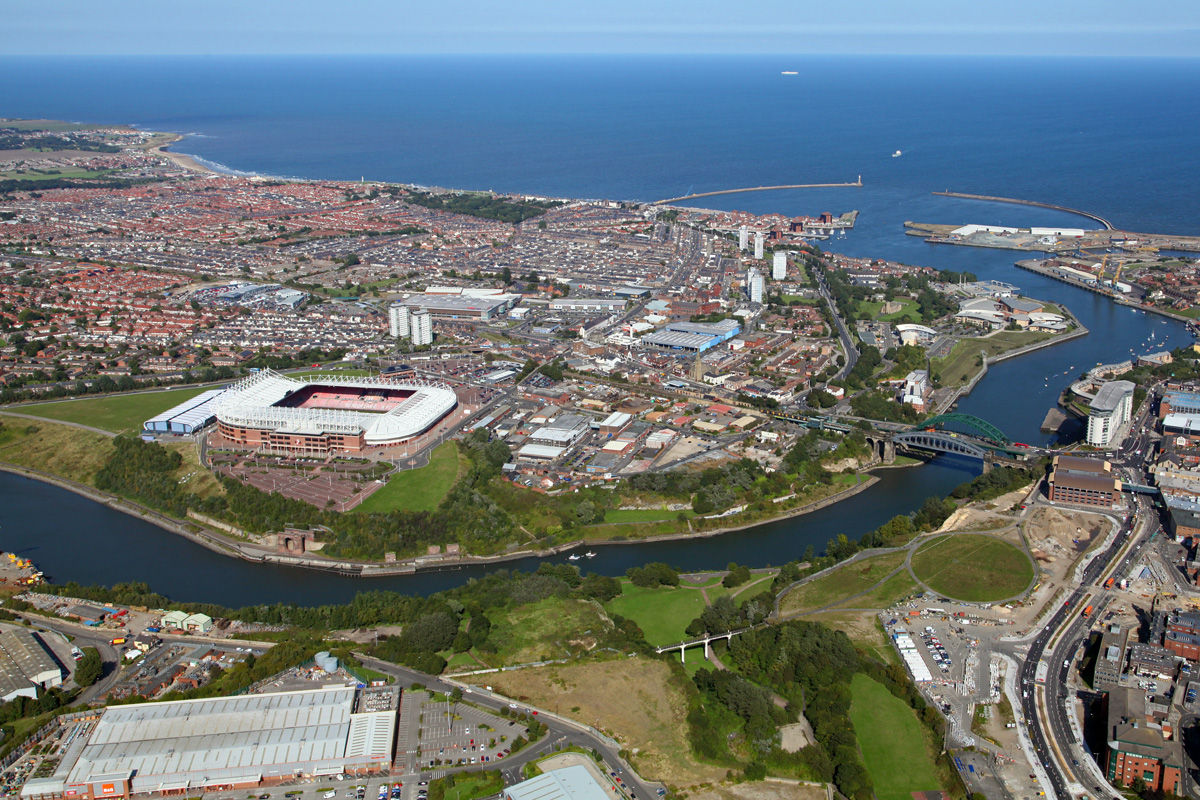- UK /
- Sunderland
Discover The Latest Property Statistics and Sold House Prices In Sunderland, Tyne And Wear.
Gain a competitive edge in the Sunderland, Tyne And Wear housing market using our extensive data on house prices with local insights and trends.
See more data for postcode districts in Sunderland:

SUNDERLAND
Property market data for Sunderland in Tyne And Wear. Compare data on the district postcode areas of Sunderland including sold house price growth, long let gross rental yield, buyer demand, average asking price, average price per square foot and average rental prices. Explore Sunderland with a range of tools to help you understand the local market.
In the centre of Sunderland, SR2 long-let gross yield is 4.8%, the average rental price is £145 the average asking price is £159,490 and the average price per square foot is £147. There are currently N/A completed property sales per month, with a turnover of 11.0%. Toggle between postcode districts to see how different areas compare.
BUY-TO-LET PROPERTY INVESTMENT IN SUNDERLAND
Understanding the Housing Market in Sunderland: Key Facts and Figures
A port city, approximately 10 miles away from Newcastle-upon-Tyne and in the Historic County of Durham on the mouth of the River Wear, Sunderland was founded in 930 AD and is renowned for shipbuilding, once thought to be the biggest shipbuilding town in the world. The city also has a coal-mining heritage and was known for glass making but during the latter half of the 20th century these industries all declined and Sunderland became infamous for poverty and unemployment. In 1992 it was granted city status and while it has a lower economic output per capita than northern cities, the industry has certainly returned. Sunderland is now a centre for car manufacturing and science and technology. In 2019, Sunderland had a Gross Domestic Product of £8.1 billion, with manufacturing jobs accounting for 16.5% of all jobs in the city, with an average yearly wage of nearly £30,000 per year. GDP growth for the city was 1.1% from the year before. Unemployment in the city is high. In 2021, 6.3% of the local population was out of work, compared to approximately just 3.5% unemployment, nationally. However, Sunderland has outgrown the reputation it garnered during the 70s, 80s and into the 90s, as a city notable for its problems. In terms of GDP per capita, it is currently the 14th strongest metropolitan district in England, out of 36, and therefore easily sits, nationally, in the top 50%. It has always been and still is a city of makers. Mackems, as the local population is popularly known, is a term that means make them. Sunderland has a creative spirit forged in industrial history and post-industrial resilience that expresses itself in the popular scene of the city today. It has a built heritage that is celebrated and brought back to life by public-private partnerships to provide those local spaces that help the city's creatives thrive. On top of that, there are more than a few museums and galleries, that are very much part of the local tapestry. The National Glass Centre, the Sunderland Museum and Winter Gardens and Sunderland Maritime Heritage are notable examples. Sunderland has a fairly small city centre with a metro area population, as of 2022, of only 344,000 people. Due to a variety of regeneration projects over recent years, city living has increased in popularity in the city and more homes are planned to be built around the Sunderland Riverside. As well as new developments there are older apartment blocks, and terraced housing, and rather unique to Sunderland, there are a lot of single-storey terraced bungalows, known locally as cottages. There is everything from buy-to-let to student accommodation, to more expensive family homes in the suburbs. Low property prices and a strong rental market mean landlords can see rental yields of 7%+.